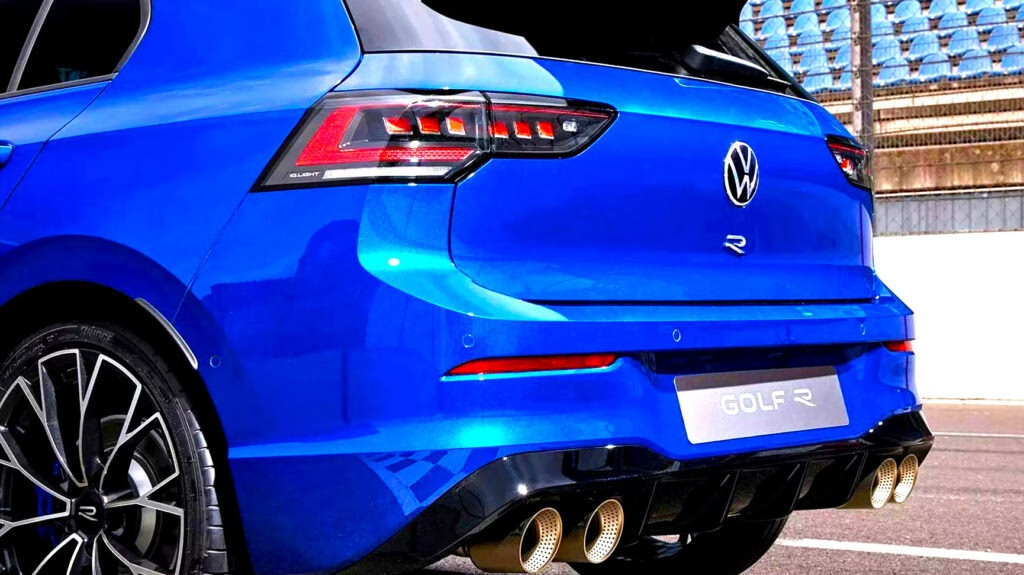Will the 2027 Golf R Finally Deliver the Power Fans Have Been Waiting For?
Volkswagen has a knack for keeping enthusiasts on their toes, and the latest whispers about the 2027 Golf R are stirring up more excitement than ever. For years, fans have dreamed of a Golf that truly lives up to the “R” badge—something with the kind of muscle that leaves hot hatch rivals in the dust. So, is VW finally about to deliver on that promise? Let’s dig into what’s really coming and why this next Golf R could be a game-changer.
What’s Under the Hood: Is the Five-Cylinder Hype Real?
The headline news is hard to ignore: the 2027 Golf R is rumored to swap its familiar 2.0-liter turbo-four for Audi’s legendary 2.5-liter five-cylinder engine. If you’ve ever heard the warble of that five-pot in an RS3, you know it’s not just about numbers—it’s about character. We’re talking 400 horsepower and 354 lb-ft of torque, straight from one of the most celebrated engines in the modern performance world.
That’s a massive leap from the current Golf R’s 328 hp. For context, the RS3’s five-cylinder has won International Engine of the Year awards multiple times, praised for its blend of brute force and daily usability. If VW pulls this off, it’s not just a power bump—it’s a statement. And with emissions standards tightening across Europe, this could be the last chance for a pure-petrol Golf R to go out with a bang.
How Will the Chassis Handle All That Power?
Packing nearly 400 horses into a compact hatchback is no small feat. VW isn’t just dropping in a new motor and calling it a day. Reports point to serious chassis upgrades: reinforced suspension, sharper geometry, and—perhaps most exciting—Audi’s torque-splitting rear differential, borrowed from the RS3. This bit of tech is a revelation in the RS3, allowing for controlled oversteer and razor-sharp corner exits. Imagine that, but in a lighter, more playful Golf.
Add in bigger brakes, semi-slick Bridgestone tires, and forged wheels, and you’re looking at a car that’s built to do more than just straight-line sprints. It’s about balance, confidence, and the kind of feedback that makes you want to take the long way home. Spy shots of recent prototypes show aggressive aero tweaks—vented hoods, larger intakes, and a beefy rear spoiler—hinting that VW is dead serious about the R’s performance credentials this time.
Why Is This the Last Pure-Petrol Golf R?
Here’s the bittersweet part: the 2027 Golf R is shaping up to be the final chapter for pure-gasoline Golfs. VW has already mapped out a future filled with hybrids and EVs, and the next Golf R will almost certainly be electrified. The five-cylinder monster, if it arrives as rumored, will be the swan song for an era of internal combustion that’s defined the hot hatch genre for decades.
This isn’t just a VW thing, either. Across the industry, we’re seeing icons like the Ford Focus RS and Renault Megane RS bow out or go electric. The Golf R’s move to hybrid or full-EV powertrains is inevitable, but that makes this last hurrah all the more special. For many enthusiasts, it’s a chance to own a piece of history—a car that blends old-school thrills with modern engineering.
How Does It Stack Up Against the Competition?
Let’s be real: the hot hatch segment is more competitive than ever. The Mercedes-AMG A45 S, with its 416 hp, currently sets the benchmark for power, while the Honda Civic Type R and Toyota GR Corolla focus on razor-sharp handling. The rumored five-cylinder Golf R would slot right into this mix, offering a unique blend of character, performance, and everyday usability.
What sets the Golf R apart, though, is its heritage. For 25 years, the R badge has stood for understated speed and all-weather capability. This new model, if it lives up to the hype, could finally give VW the firepower to take on the segment’s best—not just on paper, but in the real world.
What Should Enthusiasts Watch For Next?
While VW hasn’t officially confirmed all the details, the signs are hard to ignore. Prototypes are out testing, engineers are hard at work adapting the five-cylinder to meet stricter emissions rules, and the anniversary timing is just too perfect. If you’re a fan of fast Golfs, now’s the time to pay attention.
Keep an eye out for official announcements in the coming months. If the five-cylinder Golf R does arrive in 2027, expect limited numbers and a price tag to match its special status. But for those who’ve waited years for VW to deliver a true R 400 successor, it’ll be worth every penny.
The big takeaway? The next Golf R isn’t about perfection—it’s about smarter adjustments. Start with one change this week, and you’ll likely spot the difference by month’s end.

